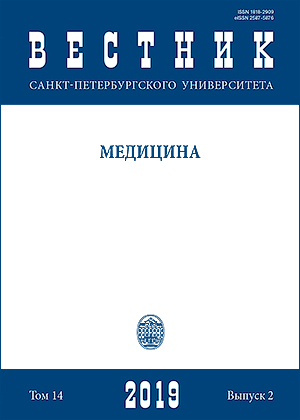Ageing Acceleration and Disease Onset: Ontogenetic Specificity of Pathogenetic Mechanisms
DOI:
https://doi.org/10.21638/spbu11.2019.203Аннотация
The article which unfortunately happened to be the last poshumous paper published by recently deseased Prof. Habil. Dan Riga, MD, PhD, DHc, is devoted to the problem of imperfection and vulnerability of the natural genetically determined adaptation mechanisms available to human being. All defensive mechanisms encoded in human reactivity are principally imperfect and have to cause secondary harm. It means that the very defence is pathogenic, especially in chronic situations when the natural cost of adaptation increases to unbearably high level. That is central paradigm of the whole science of Pathophysiology. The imperfection and secondary pathogenicity of natural defence (autopathokinesis) was emphasized earlier, since first coined by August Weismann, for example in works published by L. P. Churilov. This article analyses the basic aspects of health and disease under the aforementioned bias, with original interpretation of the role of vulnerability and imperfection of human defensive mechanisms in chronic repeated stress and within the continuum of physiologic and pathological senescence. The principle is illustrated by several examples from the general pathology of typical pathological processes and with the correlations to most important geriatric syndromes and diseases. According the statements of the authors, the human being has an ontogenetic route, from childhood and youth health, through adulthood, towards old age (senescence) and related multiple pathology (including dementia). Human vulnerability is extremely complex and manifests at different levels: macromolecular, sub-cellular, cellular, tissual, of organs, of biological system, with additional specific traits for the central nervous system. Slowly, throughout individual ontogenesis, closely related to vulnerability, an etiopathogenic cascade (tetrad) develops: it is entropic, of structures disorganisation and disturbance of their functioning: distress wear-and-tear “ageing” poly-pathology. Its dynamics is self-sustained, aggravated, and
rendered more complex by vicious patho-physiological multiplication circuits.
Ключевые слова:
ontogenesis, sanogenesis, distress, oxidative stress, wear, ectropic, brain volatility, optoptosis, telomere, telomerase, molecular chaperones, heat-shoch proteins (HSB), etiopathogenic entropy cascade, stressful lifestyles
Скачивания
Библиографические ссылки
References
→ polipatologie, In: G. Cornuţiu, D. Marinescu (Eds.), Orientări şi perspective în gândirea psihiatrică românească actuală, Vol. 1. Oradea, Ed. Universităţii din Oradea, 2007, pp. 31–75.
Загрузки
Опубликован
Как цитировать
Выпуск
Раздел
Лицензия
Статьи журнала «Вестник Санкт-Петербургского университета. Медицина» находятся в открытом доступе и распространяются в соответствии с условиями Лицензионного Договора с Санкт-Петербургским государственным университетом, который бесплатно предоставляет авторам неограниченное распространение и самостоятельное архивирование.




